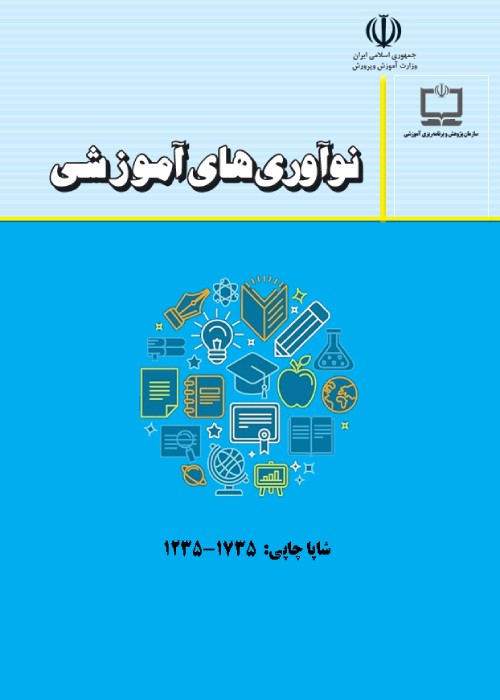Distinguishing between bullying and non-bullying students based on cognitive emotion regulation strategies and school connectedness
Author(s):
Article Type:
Research/Original Article (دارای رتبه معتبر)
Abstract:
The present study was conducted with the aim of distinguishing bullying students based on the components of cognitive emotion regulation strategies and school connectedness. It was a descriptive-correlational and group comparison study. The research sample consisted of 98 bullying and 57 non-bullying students who were selected from a population of 381 students (191 females and 190 males) of Tabriz high schools who were selected using multi-stage cluster sampling method. To evaluate the research variables, Alvius's bullying questionnaire (2003), the cognitive emotion regulation questionnaire of Garnovsky and kraaij (Factors of self-blame, blaming others, rumination, catastrophic perception, acceptance, positive refocus, and planning and evaluation, 2006) and Beatty and Brew's school connectedness questionnaire (components of positive feeling towards school, teacher support, the sense of respect and justice at school, participation in the community, person's relationship with school and academic participation, 2005) were also used. In order to differentiate between bullying and non-bullying students, the step-by-step discriminant function analysis was used. Data analysis led to a significant function (p≤0.001). Here, according to the discriminant function analysis, around 67% of the people in the two groups were reclassified. The results revealed that the means of the bully and non-bully groups in terms of the refocusing components- planning, positive evaluation - wider perspective, acceptance and catastrophizing related to the cognitive emotion regulation strategies questionnaire and also in terms of the components of the sense of respect and justice at school and the positive feeling towards school, related to the school connectedness questionnaire, are significantly different. In terms of this function, the variables positive feeling towards school and positive evaluation - the broader perspective- had the highest power in distinguishing the two groups of students (i.e., bullying and non-bullying). As a result, it could be said that the components of refocusing, i.e., planning, positive evaluation - the broader perspective- acceptance and catastrophizing, the sense of respect and justice at school, and the positive sense towards school are very influential in distinguishing between bullying and non-bullying students. Considering the problem and findings, it is suggested to education authorities and counselors to reduce bullying in students by improving and developing cognitive emotion regulation strategies and school connectedness components among the students.
Keywords:
Language:
Persian
Published:
Quarterly Journal of Educational Innovations, Volume:20 Issue: 78, 2021
Pages:
79 to 94
magiran.com/p2318097
دانلود و مطالعه متن این مقاله با یکی از روشهای زیر امکان پذیر است:
اشتراک شخصی
با عضویت و پرداخت آنلاین حق اشتراک یکساله به مبلغ 1,390,000ريال میتوانید 70 عنوان مطلب دانلود کنید!
اشتراک سازمانی
به کتابخانه دانشگاه یا محل کار خود پیشنهاد کنید تا اشتراک سازمانی این پایگاه را برای دسترسی نامحدود همه کاربران به متن مطالب تهیه نمایند!
توجه!
- حق عضویت دریافتی صرف حمایت از نشریات عضو و نگهداری، تکمیل و توسعه مگیران میشود.
- پرداخت حق اشتراک و دانلود مقالات اجازه بازنشر آن در سایر رسانههای چاپی و دیجیتال را به کاربر نمیدهد.
In order to view content subscription is required
Personal subscription
Subscribe magiran.com for 70 € euros via PayPal and download 70 articles during a year.
Organization subscription
Please contact us to subscribe your university or library for unlimited access!


